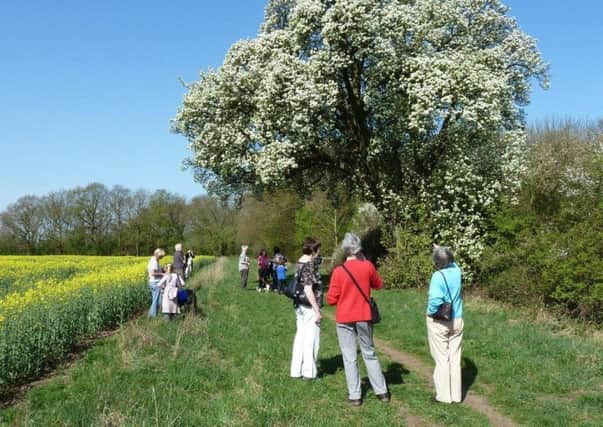Ancient pear tree in Cubbington to '˜live on' despite HS2


Cubbington’s ancient wild pear tree could live on despite it and the woodland in which it currently stands being lost to the HS2 high-speed rail project in the years to come.
Members of the Cubbington Action Group against HS2, who have campaigned to save the tree, received help from an unexpected quarter when they were contacted by Paul Labous, a lecturer at Shuttleworth Agricultural College in Bedfordshire, who offered to attempt to graft cuttings from the tree with his students.
Advertisement
Hide AdAdvertisement
Hide AdCuttings were sent to the college over a two year period, but grafting proved difficult due to the age of the tree.


This year, Mr Labous was finally able to report a successful graft from new growth taken in early 2016 from the base of the tree.
The next step was to make sure that the DNA of the crown growth of the original tree and the new maiden tree sapling matched.
Leaf samples of both were collected and the match was confirmed.
Advertisement
Hide AdAdvertisement
Hide AdFurther propagation from the maiden tree is continuing at Shuttleworth College, prior to it being brought back to the village.


It is hoped that new stock from this famous tree will thrive in Cubbington after the original makes way for the railway line in the future.
Peter Delow, chairman of Cubbington parish council and of the action group, said: “Although there can be no adequate compensation for the present residents of Cubbington for the loss of a much-loved tree, I am very grateful to Paul and his students for their work in securing for us a source of saplings that should ensure that, in due course, future generations of Cubbingtonians will once again have their springs brightened by the sight of a mature pear tree in blossom.”
Standing close to South Cubbington Wood, a ,section of which will make way for the HS2 line, the tree could be over 200 years old and is the second largest wild pear reported in UK.
In 2015 it was voted as England’s Tree of the Year.
Advertisement
Hide AdAdvertisement
Hide AdAll efforts to save both the tree and woodland have failed, despite a petition to the Parliamentary Select Committee on HS2 for a bored tunnel.
HS2 Ltd recognizes the value of the tree and said it would either attempt propagation from seeds or grafts or preserve its DNA, but villagers feared that the company would not allow enough time in its construction programme to obtain a successful graft.
Mr Labous has previously succeeded in taking a graft of another ancient variety of tree - the Warden Pear tree, which was mentioned in Shakespeare’s The Winter’s Tale.